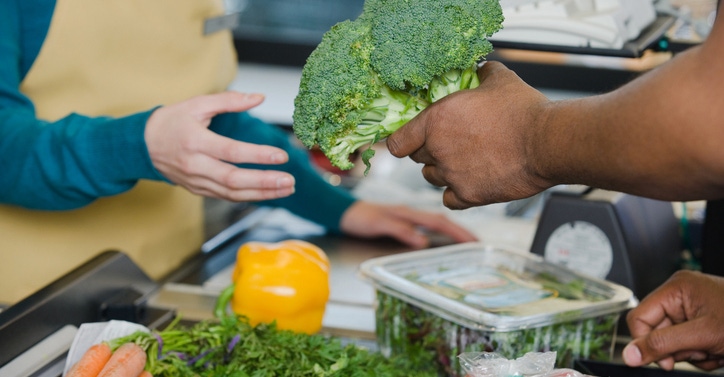July 25, 2018

With internet marketers touting low, low prices and supermarkets, Walmart and Costco carrying more of the products that once made you unique, the heat is on independent natural retailers like never before. You can’t exactly price-match, though, or you’ll put yourself out of business. So what can you do to attract price-sensitive shoppers and prevent longtime customers from shifting their dollars to other, cheaper retailers? Here are nine strategies.
Retailer
Consider EDLP for top sellers. We used to have too many deals and specials to keep track of, so we rolled everything into our L.E.A.N. (Lower Everyday at Natur-Tyme) program. This includes mostly supplements, as well as some health and beauty and grocery items, all up to 45 percent off MSRP. To commit to EDLP, you need vendor support, or else you’ll cut into margins. I tell each direct rep or 
Start a customer loyalty program. Before POS, we handed shoppers a personal wellness card, but now they get a key tag and it’s all tracked electronically. They get one wellness point for every dollar spent—double points on certain days—and when they hit $200, they get a $5 reward. People are so connected to those points, and this fosters a personal connection to our store. We try to sign up every customer for our key-tag program and give them a coupon for signing up. If I sign up 50 shoppers a week, hopefully I’ll keep 10.
Try discount days. About three years ago, we started giving an extra 10 percent off everything—plus double wellness points—on the 10th of each month, and it took off like a rocket. We do four times the business on those days. The goal was to keep customers shopping with us, and it has worked. Are the other days of those weeks less busy? Maybe a bit, but not significantly. For our 35th anniversary this year, we’re experimenting with 10 percent off the last Tuesday of the month as well.
—Wendy Meyerson, owner of Natur-Tyme in DeWitt, New York
Natural products broker
Prioritize movement over margin. Number one, retailers need to remember that they bring cash, not margin, to the bank. So many retailers are focused on margin for each sale when they should really be asking, what is my total profit? Increasing turns will increase profit, so it’s about finding the right price point to generate more movement. Some very successful retailers have realized this, and they 
Look for ways to enhance service. In today’s competitive landscape, independent brick-and-mortar retailers must continue to be innovative and increase their level of service. Any value-add a store can create in terms of service quality can help build customer loyalty. For instance, I encourage independents to really consider online ordering and delivery. If you are big enough to have your own online outlet, do it. If you are big enough to use Instacart, use it. If you can do some type of delivery service, even if it’s just for prepared lunches for offices, I say do it.
Focus on fresh. Consumer loyalty comes down to love of your store—and fresh produce, one thing most shoppers are never going to buy online, so it remains one of the main drivers to brick-and-mortar. It’s also one of the first things customers see when they come into your store. So even if you don’t advertise deals online, be smart with your produce pricing because it will increase basket size and keep consumers coming back. Create great relationships with local farms and other produce vendors, and work with them to ensure you have the best pricing.
—Karen Farrell, national director brand management, nutrition and body care at Presence Marketing/Dynamic Presence in New Gloucester, Maine
Natural retail consultant
Pass on savings when you can. Don’t be a price gouger. I advise independents to look carefully at their gross profit margins and look for opportunities to give extra margin without hurting gross profit. Take supplements, where a 40 percent to 50 percent margin is customary. Above and beyond that, supplement brands often offer key retailers a volume discount, anywhere from 5 percent to 15 percent 
Be candid with customers about price. Be willing to have honest conversations about pricing with shoppers right in the aisles. Tell them, yes, you may find a better price online today, maybe strikingly better, but you may not find that same price tomorrow. But what you can always count on from us is a fair price. Smile, be polite and don’t be defensive, but make your case. Also remind them if they’re unsatisfied with a product they buy from you for any reason, they can return it; you’ll always make it right. By contrast, returning a product to an online marketer costs time and money, and there is often a lot of friction.
Don’t sweat every lost sale. The number of shoppers who actually showroom—who pick your brain only to turn around and search for a better price elsewhere—is a small minority. Don’t be confused by the vivid impression they make. But it is important to recognize that not all customers are high-quality customers, and when you determine that one is likely showrooming, realize your attention is better spent elsewhere. Don’t worry about losing that sale. The vast majority of your customers do value your customer service, knowledge and satisfaction guarantees and will demonstrate this with their dollars, so focus on them.
—Jay Jacobowitz, president of Retail Insights in Brattleboro, Vermont
About the Author(s)
You May Also Like
.png?width=700&auto=webp&quality=80&disable=upscale)




